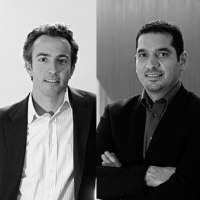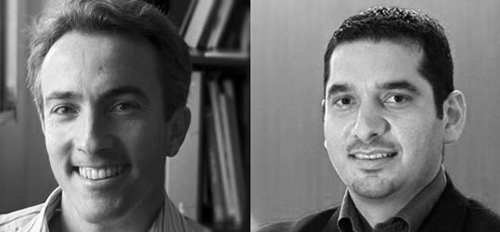The interesting project by AGi architects has to be consider as a cliché.- In a first place, they have to consider the exterior of the building (its materiality and volumetry) to generate a first connection with the patient, the hospital and its environments; and in a second place, to propose a socio-cultural treatment, generating a robust stone body marked by two red openings in the façade.
For more information, see this video of the project.-
Description of the project by AGi architects
Medical buildings are usually perceived as spaces with negative connotations, specifically when referring to rehabilitation centers where patients stay for long periods of time. Therefore, in the design process of the Hisham A. Alsager Cardiac Center, our aim was to change this perception and to build a positive space, one that is able to act as a hub for social activity, rather than just a medical center.
At this point, the first element to consider was the exterior of the building (including the volume and its materiality) as it is the first connection point between the patient, medical center and the environment. Instead of treating the general volume as a mere container of functions, AGi architects developed a proposal that is formally similar to one of social and cultural infrastructure. A sharp volume that contains two large red openings in the façade, these invite access to the building and suggests to the visitor what they will find inside. The stone clad façade provides the necessary protection for the harsh weather of Kuwait and ensures a highly sustainable performance with low maintenance.
The anatomic scheme of the heart and its mechanism within the whole human body was used for the design of the project. The heart is the central muscle of the system, which pumps blood to nourish the rest of organs and cells within it. The heart is present in the design of the central atrium: a three storeys height red colored space onto which the waiting areas and circulations open to. Several courtyards provide the space with natural light to experience the spacious architecture, in contrast with smaller rooms that are usually found in this kind of buildings. Patients move to and from this central space (the source of light and life), as red blood cells do, and are received in the clinics and different departments to be put back in the circulatory system once re-oxygenated. Cardiovascular medicine, its basis, and even the aesthetic of its tools have been used to write an architectural script that allows us to propose a different kind of healthcare building, with an experiential attitude, that takes into account the specific needs of users (patients and workers) in trying to making their stay in the hospital as easier as possible.
Clinics, grouped in three levels at the south part of the building, are disposed as small specialized self-managed cells (managed by one doctor and his team), and have three spaces: two exam rooms and one consult office, with their own waiting area. Each “cell” is organized between courtyards, providing all rooms with natural light, ventilation, and privacy for each one. Patients and workers access to the clinics from different ways to improve circulatory efficiency.
Specialized rehabilitation areas (pool, gym, running track, etc.), research and administration services of the center are strategically placed at the north of the building, which allow them to open up to the exterior along the Kuwait bay, providing great views of the sea and high quality light conditions. Inside this cluster, the main physical activity spaces are double height in order to show up in the façade and “oxygenate” the experience.
CREDITS. DATA SHEET.-
Project Name.- Hisham A. Alsager Cardiac Center.
Architecture.- AGi architects.
Client.- Hisham A.Alsager.
Type.- Health.
Budget.- Confidencial.
Area.- 15.000 sqm.
Date.- 2015.
Location.- Al Sabah Medical Area, Kuwait.
Awards.-
- Highly Commended, World Architecture Festival Awards 2014, Future Health Projects category.
- Silver A’Design Award 2013, Architecture, Building and Structure Design category.
- Highly Commended, Hospital Build & Infrastructure Awards 2013.




















































